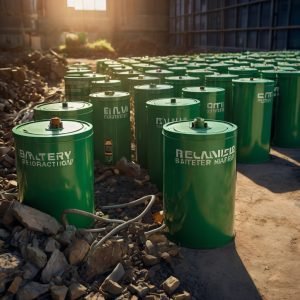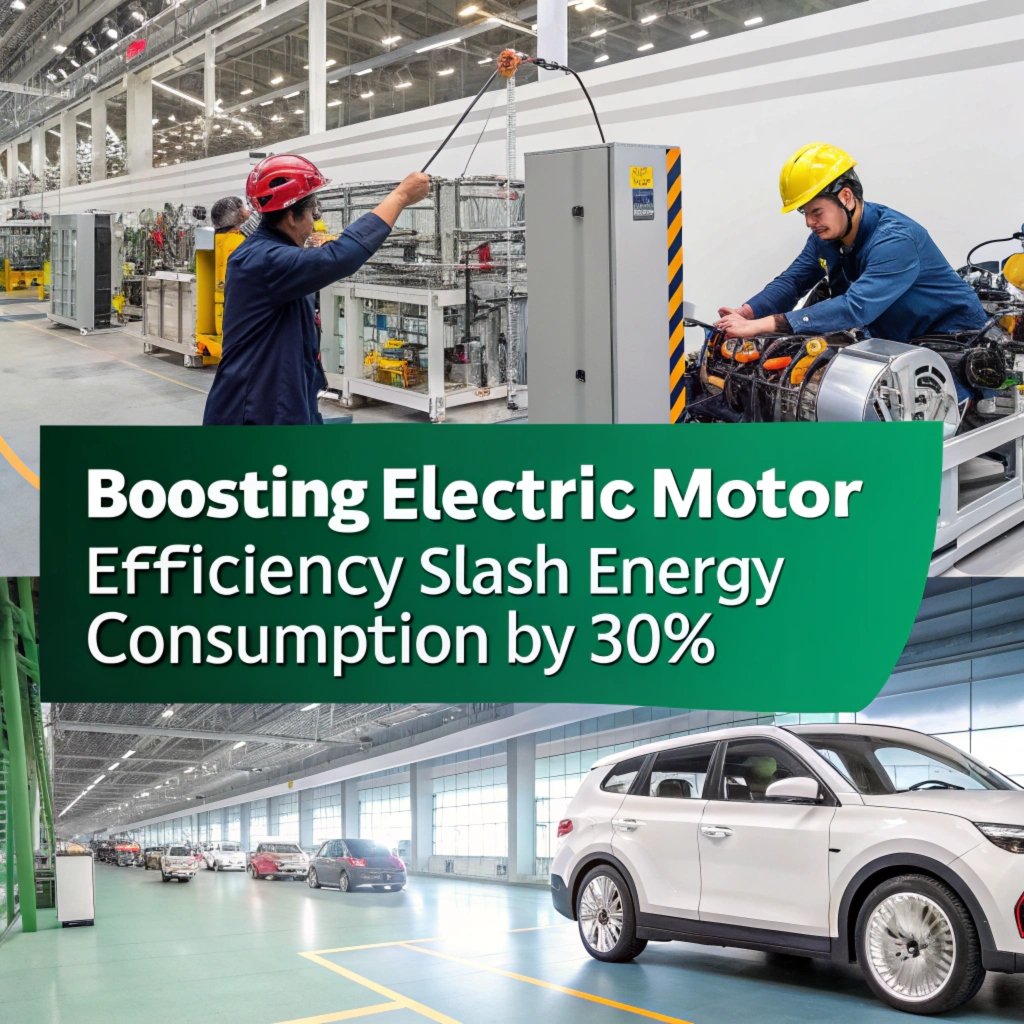You may be surprised at how much waste is generated by electric vehicles (EVs) or bicycles.
In reality, a small percentage of people are aware that recycling is not enough to meet their sustainability needs.
The alarming rate at which batteries from EVs and bikes are being discarded can lead to pollution and environmental damage if we don’t adopt effective disposal techniques.
Introduction: The issue is compounded by the rapid development of new battery technologies that will exacerbate this problem unless addressed promptly. This has led manufacturers, policymakers, and consumers to look for better sustainable methods.
Not only could a proper approach reduce waste but also aid in safeguarding ecosystems and maintaining resource conservation – it’s essential.
By concentrating on these alternatives, we can work towards lessened environmental impact while giving rise to an environmentally friendly future.
Exploring Hidden Environmental Impacts of Lithium-ion Batteries
Lithium-ion batteries have become a crucial component of electric vehicles and bicycles, offering a cleaner alternative to traditional battery types. However, their production and disposal pose significant environmental concerns.
These batteries contain toxic materials like lithium, nickel, cobalt, and graphite which can contaminate soil and water if not disposed of properly. Moreover when these metals are recycled they require high temperatures which cause energy consumption as well as pollution from smelters.
If you want to reduce waste associated with sustainable battery disposal in electric vehicle manufacturing it is advisable that manufacturers develop closed-loop recycling systems for collecting used batteries, breaking down the metal components and then reusing them to make new batteries. This could also lead to significant cost savings by recovering valuable metals like lithium cobalt nickel.
Designing Closed-Loop Systems for Recycling High-Voltage Batteries

Designing closed-loop systems for recycling high-voltage batteries is crucial in electric vehicle and bike manufacturing to minimize waste and maximize material reuse. This requires a comprehensive approach, from design to disposal, involving collaboration between manufacturers, suppliers, and other stakeholders.
To extract valuable materials like cobalt and graphite from spent lithium-ion batteries, designers can use solvents or mechanical disassembly techniques that are both efficient and environmentally friendly. These extracted materials can be recycled into new products, reducing the need for primary production processes. For instance, recycling lithium can help alleviate supply chain bottlenecks while preserving scarce natural resources.
Implementing an effective take-back program is also vital. This involves considering logistics and transportation costs to ensure efficient collection of spent batteries at the end of their life cycle, such as fuel-efficient routes or waste management partnerships with local authorities. By collaborating between manufacturers, recycling facilities, and government agencies, we can minimize environmental impact while saving resources.
Designing closed-loop systems from production requires careful consideration. One key strategy is involving suppliers in the design process to ensure a standardized system for collecting spent batteries at the end of their life cycle. This can help facilitate efficient processing and reduce costs associated with take-back programs.
To get started on designing closed-loop systems that prioritize battery recyclability, follow these tips: consider industry regulations such as e-waste management standards or local recycling guidelines when implementing your program; engage suppliers in product design to minimize material usage; and establish partnerships with reputable recycling facilities. By taking these steps and collaborating with stakeholders, we can significantly reduce waste generated by high-voltage batteries.
By the way, a closed-loop system not only benefits the environment but also has significant economic advantages for manufacturers. For instance, companies like Apple have reduced battery disposal costs through their take-back programs or partner-led recycling initiatives. By embracing closed-loop systems and sharing knowledge about successful implementation strategies we can enhance sustainability in high-voltage batteries industry
Safe and Effective Separation Methods for Mixed-Solid Waste Streams
Proper separation of materials from batteries is crucial for effective recycling and minimizing contamination risks. The production of electric vehicles (EVs) and bicycles generates an estimated 20,000 tons of lithium-ion waste annually, posing significant environmental hazards if not managed properly. A single Lithium-Ion Battery can contain up to five different metals like copper, nickel (of 70%), cobalt(10%), and lithium(Io),and manganese(4%). This complex mixture necessitates advanced sorting processes.
Lead-Acid Batteries:
Recycling lead-acid batteries with hydrochloric acid-based processing can recover 90% of recyclable materials. The battery’s outer casing is usually the first to be disassembled, followed by a gentle removal process that involves soaking in an acidic solution and subsequent rinsing. Proper separation techniques help minimize contamination risks.
Nickel-Cadmium (NiCd) Batteries:
These batteries contain toxic components such as nickel and cadmium requiring specialized handling processes. Handling requires extreme care due to the risk of releasing these hazardous materials into the environment, which can pollute soil, air, and water sources if not done correctly. Vacuum pumps are typically used during disassembly to prevent contamination.
Lithium-Ion Batteries:
These batteries often require dry recycling methods to avoid moisture damage that could render them unusable in future vehicles or applications. Mechanical pressing is a common method of sorting lithium-ion batteries based on their chemistry types and grades, ensuring the recyclability of valuable materials like cobalt, nickel, and manganese.
Nickel-Metal Hydride (NiMH) Batteries:
Similar to NiCd batteries but without requiring specialized equipment these batteries can be recovered through various methods such as hydrometallurgical processing. Proper disassembly procedures are crucial for extracting valuable metals from this type of battery with a careful removal process involving acid-based treatment and subsequent rinsing.
Battery Recycling Challenges:
Proper separation is key, however there are several challenges that face the recycling industry. The most notable issue being: Materials mixing and contamination which often makes it difficult to get accurate results in terms of quality materials recovery, Diverse types of lithium-ion chemistry necessitate advanced sorting processes. Specialized facilities may not exist or can be costly to establish.
Handling nickel-cadmium batteries requires special handling procedures due to the toxic nature of their components. This is evident as they contain high levels of metals like Ni and Cd which require specialized treatment prior disassembly.
Lithium-ion recycling poses unique challenges including: moisture damage, requiring proper dry processing methods for safe recovery from these types of materials.
Proper separation is key however there are several challenges that face the industry such as:
- Materials mixing and contamination
- Diverse type lithium chemistry necessitates advanced sorting processes.
Utilizing Emerging Technologies to Break Down Battery Materials

Effective battery disposal is crucial for reducing waste and minimizing environmental impact in electric vehicles (EVs) and bikes. Advanced techniques like hydrometallurgy can recover up to 90% of lithium from spent batteries, allowing for more efficient resource conservation. For example, a company like Tesla has implemented hydrometallurgy-based battery recycling processes at their manufacturing facilities.
One key application of this technology is dissolving the complex mixtures in solution or using high-temperature processing to extract valuable metals. This method has been used by companies such as Retriev Technologies and Li-Cycle, which have reported significant increases in lithium extraction rates. By leveraging these advanced recycling methods, we can significantly reduce waste sent to landfills and conserve natural resources.
Another approach involves mechanical recycling, which physically disassembles batteries to recover recyclable components like copper wiring and aluminum cans. This process is particularly effective for recovering materials from spent lead-acid batteries or lithium-ion battery modules in vehicles. By implementing this method, companies can reduce material extraction costs by up to 50% while minimizing landfill waste.
As we move forward with sustainable energy solutions, it’s essential that we rethink battery disposal strategies. One innovative approach is electrochemical recycling, which utilizes microorganisms or enzymes to break down complex materials into their constituent parts. This technology has shown promise for reducing waste and increasing resource efficiency in the automotive industry, particularly when combined with urban mining.
However, there are also potential risks associated with this emerging field of research, such as contamination of waterways if not properly contained. For example, uncontrolled electrochemical reactions can produce toxic byproducts like hydrogen peroxide or carbon dioxide. To mitigate these risks, it’s crucial to implement strict controls and monitoring systems when implementing electrochemical recycling processes.
By integrating these technologies into battery disposal strategies, we can significantly reduce waste sent to landfills while promoting resource conservation in the EV and bike manufacturing industries. This approach not only benefits the environment but also helps minimize costs associated with raw material extraction and processing.
Chemical Neutralisation Techniques to Mitigate Toxic Wastes
The production cycle for electric vehicles and bikes comes to an end when it’s time to dispose of batteries, but if not done properly, toxic chemicals can contaminate soil and water sources for decades. This is a pressing environmental concern that requires immediate attention.
Different battery types pose unique challenges in their disposal due to the varying amounts of hazardous materials they contain. Lithium-ion batteries are notoriously difficult to recycle because lithium ions require extreme temperatures during processing, while lead-acid batteries can be broken down using acid-based methods like aqua regia treatment.
Aqua regia, for example, is a highly effective method in breaking down metals such as copper and gold. However, its use of hydrochloric acid and nitric acid presents safety risks if not handled properly by trained professionals. It’s also worth noting that some materials like platinum cannot be broken down using aqua regia due to their high melting points.
Wet chemical processing is another technique employed for sustainable battery disposal, which involves treating batteries in acidic solutions that target specific components while leaving others intact. This method has shown great promise but requires precise control over conditions and handling procedures to prevent contamination risks.
Electrolysis can be used to break down lead into harmless forms like carbon dioxide or water through controlled breakdown processes. Although this technique reduces hazardous waste, it may not always eliminate all byproducts entirely.
Companies around the world are pioneering innovative battery disposal solutions as part of their sustainability initiatives. For instance, some organizations use environmentally friendly methods that incorporate beneficial bacteria and fungi to degrade organic pollutants in batteries safely without using chemicals or heat treatments.
When done responsibly, chemical neutralization techniques can protect our natural water sources from hazardous materials generated by electric vehicles and bikes.
Summary: The proper disposal of lithium-ion batteries is a complex issue. Battery management will need to find better answers
Reducing Waste: Essential Guidelines for Sustainable Battery Disposal in Electric Vehicle and Bike Manufacturing

Implementing Circular Economy Principles in Manufacturing Process
Great companies must lead by example when it comes to adopting sustainable practices. When battery disposal is done incorrectly, toxic materials can contaminate the environment which will make an impact on many communities worldwide.
The failure of companies to adopt circular economy principles for their manufacturing process results in unnecessary environmental degradation and waste production which could result in significant financial losses down the road from fines associated with pollution or legal issues stemming from a company’s negligence.
So, businesses that implement sustainable practices will not only minimize waste but also increase brand loyalty by being perceived as socially responsible companies that care about reducing their ecological footprint.
Take decisive action today to make your business more sustainable and environmentally conscious in manufacturing processes for battery disposal – it is time to take the leap towards a cleaner future. .



